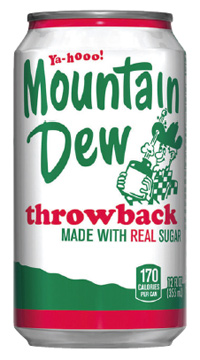Change And Its Discontents
THERE’S A LOT OF TALK ABOUT logos these days, after the Gap, Gatorade, and Tropicana saw major branding initiatives
At the same time, we’re still recovering from the political season. And that’s a time when the idea that someone would change, and then change back, what was supposed to have been a carefully considered opinion, is a quick trip to that most awful of accusations, the “Flip Flop.”
And that’s the fine line that many companies walk when they try to innovate and do something new. That they’re damned if they don’t, (look at BevNET – we’ll yell about stodginess and staid corporate culture) but they’re damned if they do, because the collective wisdom of the crowd is, typically, anti-change.
In fact, to draw another parallel to politics, the second change comes to the system, people recoil with horror at what they’ve done. They instinctively don’t like change in their environment, and they don’t like it forced upon them, and as we just saw in the mid-terms, when it’s what they’ve asked for, they immediately pivot and say it isn’t working.
The problem is that with regard to both branding and politics, change is inevitable – it’s just how it’s packaged and presented – or hidden – that can determine the receptiveness of the audience. Politically, our country has been changing for years, swinging politically rightward even as socially we’ve swung left. Meanwhile, corporations have changed logos and design schemes for years but it’s never been an issue; it’s only in a world where immediate objections – gut level reactions – can, over the course of a day, morph into digital petitions, that the fact of change has become a major issue. Each time it has, however, at least in a branding sense, it has hit with a thud.
Which leads me to wonder what would happen if a corporation made an announcement that it was staying the course with its design agenda. That PepsiCo had said it was never going to change the lightning bolt on Gatorade, that the Gap had posted it would always keep the “blue box” or even the actual, geomorphic “gap” that defined its logo back in the 1970s.
I guarantee there would have been an immediate petition for change, a collective digital howl of dissatisfaction calling for the disposal of these overly conservative values reflected in tired corporate logos.
I won’t pretend to be a design expert, but, like everybody else, I’ve got my likes and dislikes. Mostly, though, I think personal aesthetics are developed environmentally as much as they are internally: that is, there’s as much to do with how the campaign is run as what it stands for. Make change popular, you can change political dialogue. Make it your boogeyman, and even if it’s needed, it can cause reactionary backlash.
I ask you to consider this when you think about how to handle existing product lines and categories that might indeed be evolving. There’s a great example on my desk right now – the Mountain Dew throwback can. I’m looking at the hillbilly. He’s funny-looking. I’d buy a t-shirt that had him on it. But I don’t think anyone’s screaming to bring him back for good.
There’s a lot of discussion these days about the complexity of choice, a lot of theory that consumers might like to think they enjoy a wide variety of choices but maybe they want it narrowed for them. I think they just want to be on the side that’s winning. So when you’re looking at products that are changing, even in the littlest ways, maybe you should think about it that way – not so much whether the change itself is for the good, but whether it’s going to appear to be that way, how consumers will realize the change is happening so that they’re primed for it. You don’t want to go back: after all, flip flops are for your feet, not for campaigns.


Receive your free magazine!
Join thousands of other food and beverage professionals who utilize BevNET Magazine to stay up-to-date on current trends and news within the food and beverage world.
Receive your free copy of the magazine 6x per year in digital or print and utilize insights on consumer behavior, brand growth, category volume, and trend forecasting.
Subscribe